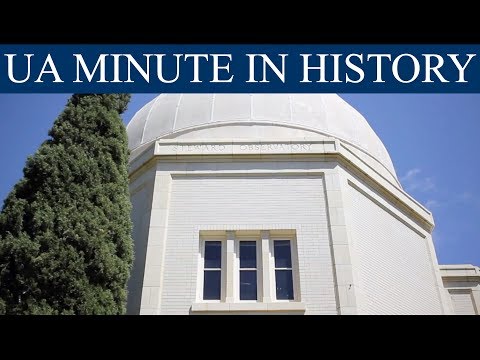The University of Arizona has a legacy in astronomy that’s a century old. Steward Observatory has put the UA on the map for its contributions to space science and for creating the world’s largest telescope mirrors. So, how did a scientist, wealthy widow and the UA’s first big grant set the college on a path to the stars?
Find out with me, Jamie Verwys with the Arizona Daily Wildcat, in your UA minute in history.
Andrew Douglass was determined to bring an observatory to the UA campus. The scientist became a professor at the college in 1906, after helping to create the Lowell Observatory in Flagstaff. He had been let go from his first job after questioning his boss’s understanding of telescopes and his odd theories about Mars.
Douglass lobbied the state government to fund an observatory, but the government rarely gave money for research at the time.The funds would have to come from somewhere else.
Clara Fish Roberts, the first student to enroll at the UA, heard about the project and contacted Lavinia Steward, a wealthy widow of the Quaker Oats fortune, who was looking to make a donation to the school in honor of her late husband. A fan of astronomy, with a telescope of her own, Steward gave the UA its first large grant of $60,000 to build the observatory behind me today.
Though the construction was stalled by World War One, Steward Observatory was officially dedicated on April 23, 1923. Steward would never see the observatory she funded, passing away in 1917.
Follow Jamie Verwys on Twitter









